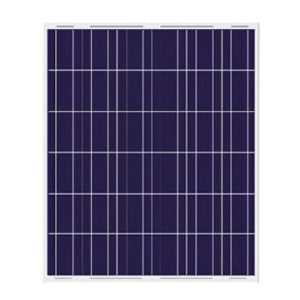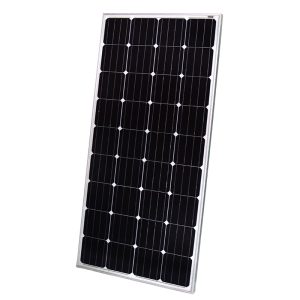Maintaining the health of your 12V lead-acid battery when a vehicle, boat, RV, or other equipment sits unused for extended periods can be a challenge. Self-discharge and parasitic loads over time can drain a battery to the point where permanent damage occurs. A simple and affordable solution is to use a small, 5-watt solar panel connected to your battery as a trickle charger to keep it topped off.
What Is a 5-Watt Solar Trickle Charger?
A 5-watt solar trickle charger is a small, portable solar panel that can be temporarily or permanently installed on vehicles, RVs, boats, sheds, or any other application using a 12-volt lead-acid battery. Its purpose is to provide a light maintenance charge that offsets the battery’s self-discharge and small parasitic loads over long storage durations.
With a rated power output of around 5 watts, these solar chargers do not charge batteries quickly but rather focus on keeping them healthy and preventing complete discharge when equipment sits unused for weeks or months at a time. They are designed to be a battery “maintainer” rather than a full charger.
How Does a 5-Watt Solar Battery Maintainer Work?
A 5-watt solar trickle charger is very simple in its design and operation. At its heart is a small, 5-watt solar panel made of silicon photovoltaic cells enclosed in a protective casing. The solar panel has positive and negative lead wires with connector tips on the end that attach directly to a 12V battery.
Integrated into the solar panel is a charge controller that regulates the charging process. The charge controller ensures proper charging voltage and current are provided to the battery based on conditions like battery state of charge, temperature, etc. This prevents issues like overcharging.
When the solar panel is exposed to sunlight, the photovoltaic cells generate DC electricity that travels to the battery to replenish its charge at a slow, steady rate. As long as adequate sunlight reaches the solar panel, it will continue to provide a maintenance charge that offsets minor battery drain during storage.
Typical Specifications
While 5-watt solar trickle chargers share the same general functionality, models do vary somewhat in their exact specifications.
- Output Power: Typically ranges from 4 watts to 7 watts under peak sun conditions. 5 watts is the most common. Determines the charging current capacity.
- Voltage: Designed for 12V lead-acid batteries. Has a maximum voltage around 16–18 volts.
- Charging Current: Ranges from 220 mA to 500 mA, depending on conditions. Provides a light, steady charge.
- Solar Cell Efficiency: The average is around 15%. Higher is better.
- Charge Controller: Prevents battery overcharge damage. May have LED indicators.
- Cables and connectors often include multiple options for connecting to a battery, like ring terminals, alligator clips, and cigarette lighter adapters. It makes installation quick and flexible.
Why use a solar trickle charger?
Maintaining the charge on a 12V lead-acid battery that powers vehicles or equipment while in storage for weeks or months provides many benefits:
- Prevents premature battery failure due to deep discharging
- Maintains battery health and extends overall service life
- Allows quick starting/use after long-term storage
- Reduces need to recharge from an external source as frequently
- Provides reserve capacity to handle small parasitic loads during storage
- Uses free, renewable power from sunlight; no electricity required
Solar trickle chargers are inexpensive, simple to install, and provide passive, automatic charging whenever sunlight is available without any user intervention required. This makes them an excellent battery maintenance solution.
Typical Applications
- Recreational Vehicles
- Boats and Marine Equipment
- Classic/Antique Cars
- ATVs/Snowmobiles
- Vacation/Secondary Homes
- Off-Grid Battery Banks
- Construction Equipment
- Weather and Security Monitoring Stations
Essentially, any vehicle or piece of equipment that uses lead-acid batteries and sits unused for weeks or months at a time can benefit from a solar trickle charger installation.
What to Look for When Buying
Key factors to evaluate when selecting a 5-watt solar battery maintainer:
- Output Power: Aim for 5 watts or higher to provide maximum charging current.
- Solar Cell Efficiency: Look for 15% or greater efficiency. Results in a smaller panel size.
- Charge Controller: Prevents battery damage from overcharging. Look for LED indicators.
- Connectors/Cables: Includes multiple options like ring terminals and alligator clips for flexible connectivity.
- Durability: Ensure waterproofing and rugged casing to withstand outdoor installation.
- Warranty: at least 1 year. Highlights manufacturer confidence in product quality.
Reputable manufacturers like Solar Exporters offer high-performing solar maintainers at reasonable prices, backed by strong warranties.
Installation Tips
Installing a 5-watt solar battery trickle charger is a straightforward process.
- Select an outdoor mounting location that receives consistent sun exposure throughout the day, if possible. South-facing is often optimal in the northern hemisphere.
- Carefully connect the solar panel leads to the battery terminals, ensuring proper polarity (positive to positive, negative to negative).
- Secure the solar panel in place using mounting brackets on a flat surface like a vehicle roof, trailer hitch, or external wall.
- Consider adding a weatherproof battery box to protect components and connections if installing externally.
- Run cables cleanly through holes in walls/bulkheads with grommets to prevent damage.
- Leave the solar panel uncovered with an unobstructed view of the sky so maximum sunlight can reach it.
With the solar trickle charger now correctly installed, it will automatically provide a maintenance charge to your battery whenever the sun is out, without any further intervention required. Check your battery periodically to ensure proper operation.
Frequently Asked Questions
What size solar panel is needed to maintain a typical car or truck battery?
A 5-watt solar trickle charger is usually sufficient for most passenger vehicle battery applications, depending on the battery capacity and age. Larger batteries may need 10–20 watts.
How much sunlight is required for a solar maintainer to work effectively?
Most 5W panels require only 2-3 hours of direct sunlight per day to provide an effective maintenance charge. Performance does drop considerably on cloudy days.
Can a 5-watt solar charger completely recharge a dead battery?
No, a 5W solar panel does not produce enough power to effectively recharge a battery from a fully depleted state in any reasonable time. It only provides a maintenance charge.
What happens if the solar panel is covered by snow for lengthy periods?
The battery will slowly self-discharge as normal if no sunlight reaches the panel. Frequent snow cover should be avoided for consistent charging.
Conclusion
Installing an inexpensive 5 watt solar trickle charger provides passive, automatic battery maintenance for stored vehicles/equipment with minimal upfront investment or complexity. Sustaining battery health reduces premature failure, saves money, and enhances reliability when retrieving your asset from storage. Choose a quality solar charger from a reputable supplier and enjoy the benefits of maintenance-free charging for years to come.
Key Takeaways
- A 5 watt solar trickle charger uses a small solar panel to provide a light maintenance charge
- It prevents lead-acid batteries from fully discharging during long-term storage
- Helps extend overall battery service life by sustaining a healthy state of charge
- Simple to install and fully automatic operation once in place
- Uses free, renewable power from the sun
For more information on solar products available for your application, contact the solar experts at Solar Exporters today.



